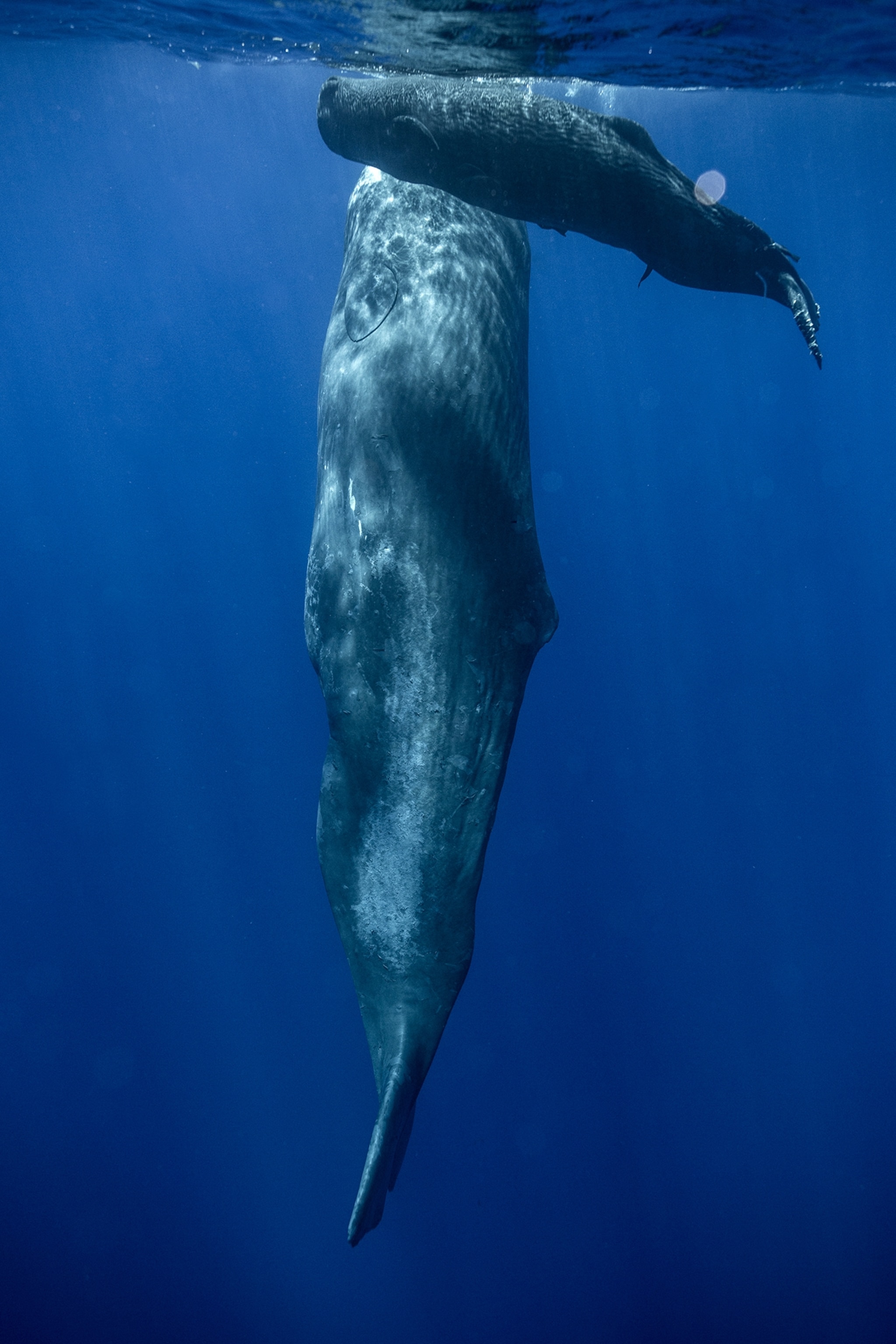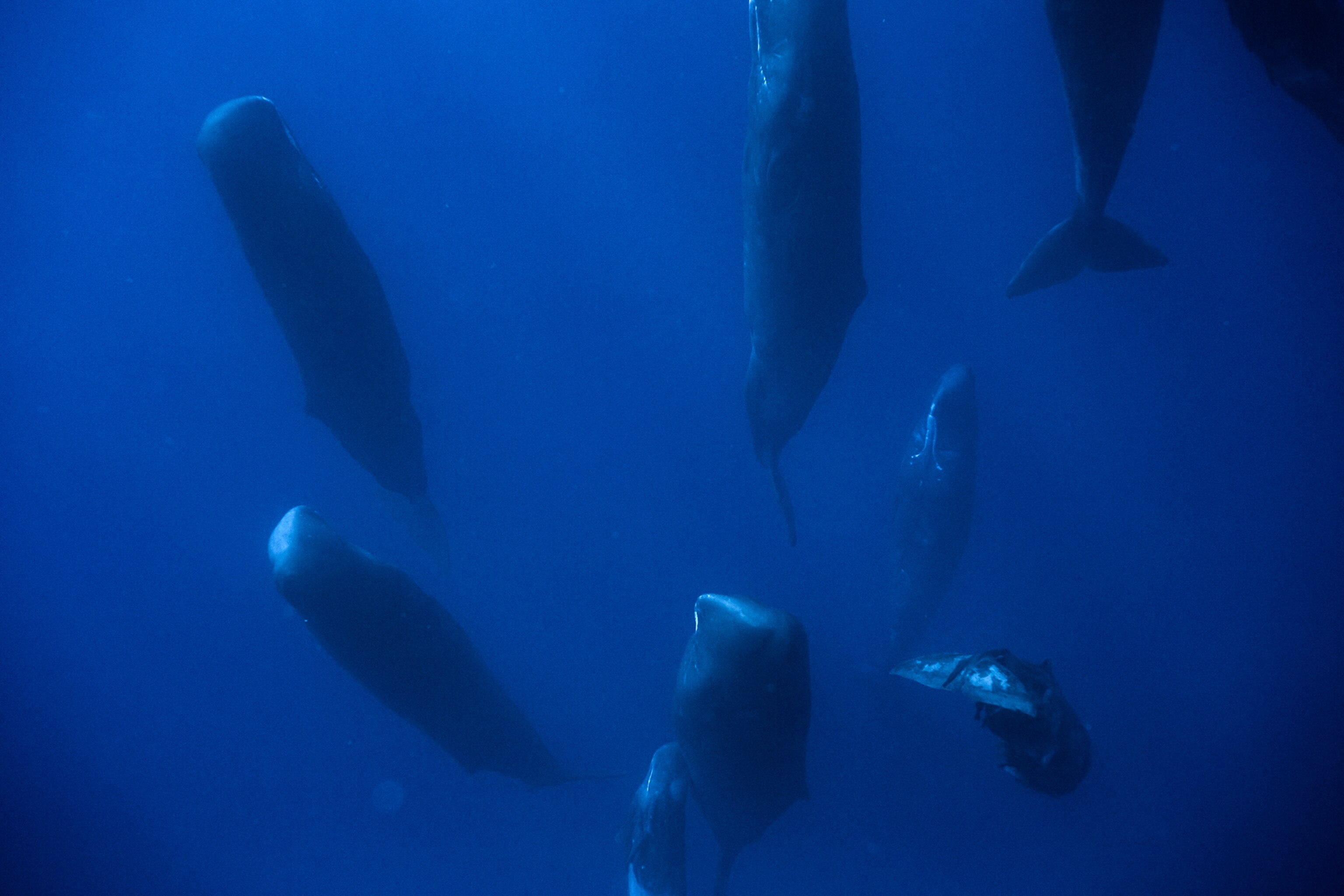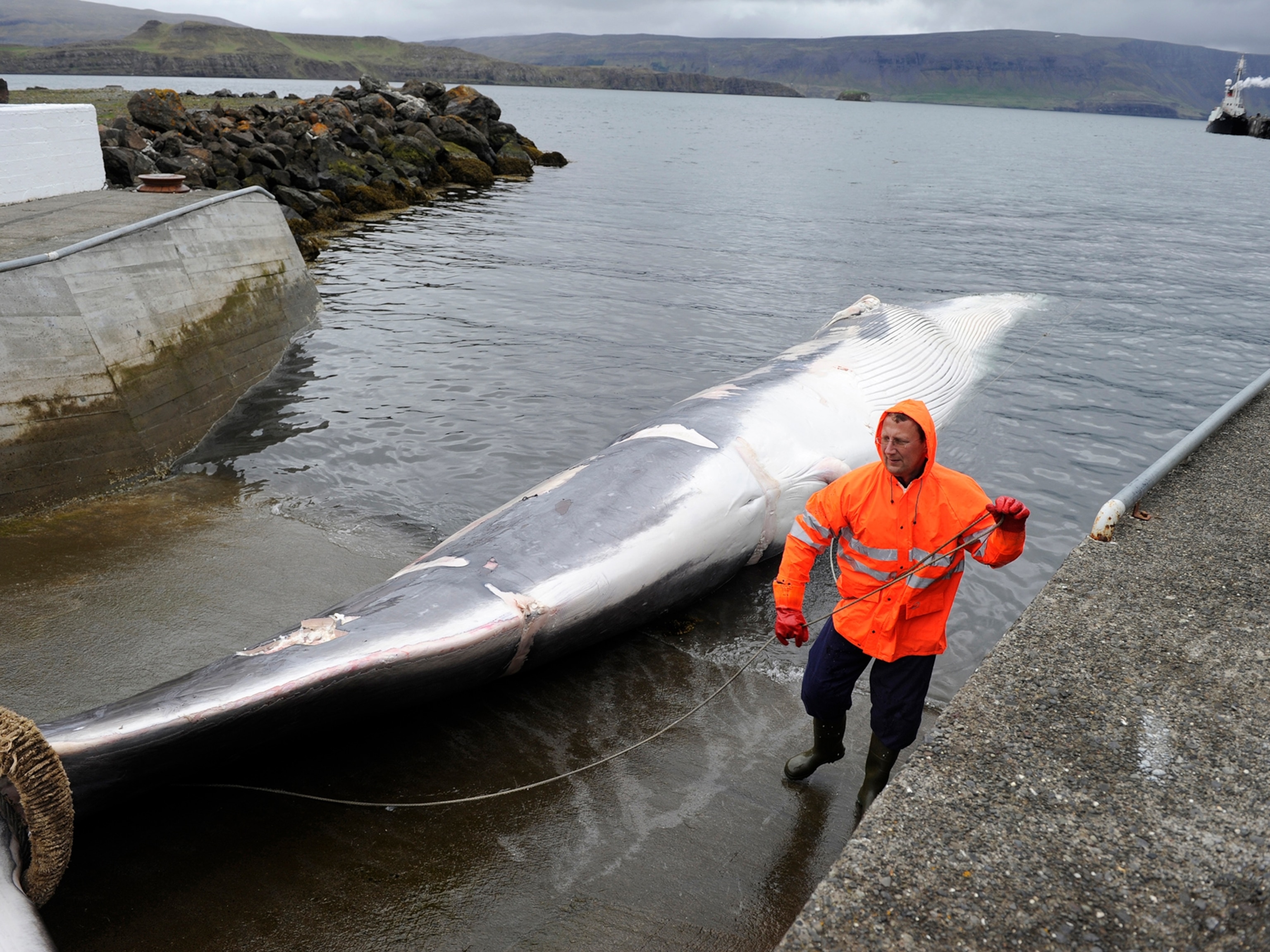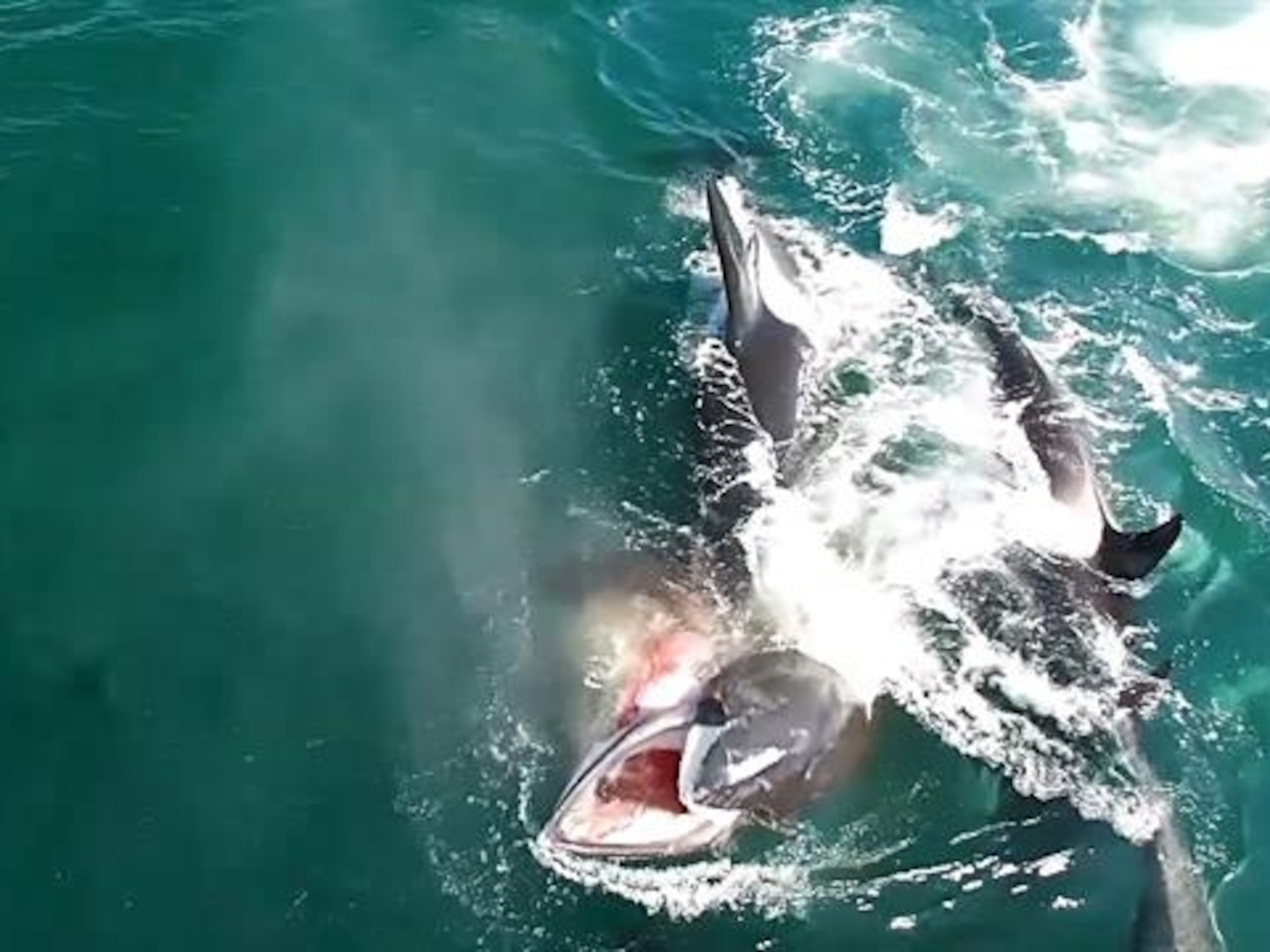First POV Video From a Minke Whale’s Back
Scientists finally got a camera on one of the small, elusive whales and can now see what their lives are like.
The minke whale eats quickly, scooping up, straining, and eating shrimp-like krill in less time than it would take a humpback to get its mouth open.
And it dives a lot, plunging through the frigid seas a half dozen or so times a minute, so often it seems to perpetually operate on fast-forward.
Earlier this month, whale researchers for the first time were able to sneak up on a minke whale in Antarctica and attach a video camera to its back. Now that recording is already helping unlock the mysterious underwater world of these shy creatures.
"It was wonderful luck," says whale scientist Ari Friedlaender, who spoke from a ship on its way across the treacherous Drake Passage toward Antarctica from Chile, for yet another attempt to find and tag minke whales. "Most of the time, by the time you actually see a minke, you aren't likely to see it again."
Elusive Giants
Friedlaender, a University of California, Santa Cruz ecologist and National Geographic explorer, spends the southern hemisphere's summer chasing whales along the blustery Antarctic Peninsula. As Adelie and chinstrap penguins sluice past, he typically bounces along the Southern Ocean in the shadow of snow-draped peaks in a borrowed black rubber raft, often tracking 40-ton humpbacks.
With additional support from WWF, Friedlaender has been trying to learn how and where humpbacks eat, hoping to understand why, amid the melting sea ice that is wreaking havoc in Antarctica, populations of humpbacks have instead exploded. Much of his work is done by stealthily floating alongside whales near the surface and using a long pole to secure a camera afixed with suction cups to their backs. The cameras typically stay on for little more than 24 hours, and then float free for Friedlaender to retrieve them later. But they shoot up to eight hours of footage, which already has helped scientists begin to track where humpbacks are foraging and how and when they put on weight.
While he calls humpbacks his "bread and butter," Friedlaender for years has been trying to get the same equipment on minke whales, because researchers know far less about them.
"We don't know how they behave, how much they feed, how deep they feed, where they go, what environment they require," he says. "We 0nly have tiny bits of knowledge."
Minkes, however, rarely cooperate.
Where humpbacks are gregarious minkes are skittish. They tend to hide in bays, surfacing amid the cover of broken sea ice to avoid being eaten by killer whales. Where humpbacks tend to travel in groups, minkes are often loners. Minkes are also, at least as whales go, small—barely half the length of a humpback and only a quarter as long as a blue whale.
So despite being the most abundant whale in Antarctica, in other words, these creatures are often hard to find. And they are harder still to approach. Over the years, Friedlaender and his colleagues have been able to put a few satellite tags on minkes, but never a camera. And there are things cameras can show that GPS data simply can't.
"Each tag we've put out has given us a glimpse of life for these whales," Friedlaender says. "How much time do they spend in open water? What is their daily activity like? But the video is highly critical because we can see whether they are in sea ice or open water. It can show us their feeding rates. It can show us what's around them."
Finally, after years of trying, Friedlaender this month stumbled upon a rare sight in Antarctica—a curious minke whale.
Lucky Break
He was on a ship just south of Lemaire Channel along the western edge of the Antarctic Peninsula, near Petermann Island, a popular destination for tourist cruise operations. Research in Antarctica is so pricey that Friedlaender regularly tags along on cruises, offering free natural history lectures to visitors in exchange for a free berth and use of the ship's rafts for his work.
One day, the crew and passengers noticed a minke swimming alongside the massive ship. When Friedlaender got word, he told the crew he needed to get out into the water as quickly as he could.
"I knew enough to know that when minkes get in this kind of curious state, they're going to be in it for a little bit," he says. "If you get an interaction, you have to act quickly."
In the fog and mist just off shore, with several rafts around him and many cameras turned his way, Friedlaender leaned precariously out of his raft, a long shaft bending in his hands. The whale surfaced again, and exhaled, and he slapped the camera onto the creature's back. The onlookers roared.
Already, footage has shown Friedlaender that minkes feed differently from other Antarctic whale species. While humpbacks slowly open their mouths and blue whales spend up to an entire minute filtering food from the water, minkes are speed demons. Unlike massive blue whales, minkes don't need great densities of food to justify the energy expense required to eat.
"It was amazing seeing how fast these guys feed," he says. "They accelerate incredibly quickly, and it was about 10 seconds between feeding lunges."
This week, Friedlaender will be back along the peninsula hoping to repeat his success with more minkes.
"It was a boost of confidence for us to know that if you do the right things and spend enough time, you can have success," Friedlaender says. "These animals are hard to work with, but we need to get a good sample size."
Go Further
Animals
- This fungus turns cicadas into zombies who procreate—then dieThis fungus turns cicadas into zombies who procreate—then die
- How can we protect grizzlies from their biggest threat—trains?How can we protect grizzlies from their biggest threat—trains?
- This ‘saber-toothed’ salmon wasn’t quite what we thoughtThis ‘saber-toothed’ salmon wasn’t quite what we thought
- Why this rhino-zebra friendship makes perfect senseWhy this rhino-zebra friendship makes perfect sense
Environment
- How fungi form ‘fairy rings’ and inspire superstitionsHow fungi form ‘fairy rings’ and inspire superstitions
- Your favorite foods may not taste the same in the future. Here's why.Your favorite foods may not taste the same in the future. Here's why.
- Are the Great Lakes the key to solving America’s emissions conundrum?Are the Great Lakes the key to solving America’s emissions conundrum?
- The world’s historic sites face climate change. Can Petra lead the way?The world’s historic sites face climate change. Can Petra lead the way?
- This pristine piece of the Amazon shows nature’s resilienceThis pristine piece of the Amazon shows nature’s resilience
History & Culture
- Hawaii's Lei Day is about so much more than flowersHawaii's Lei Day is about so much more than flowers
- When treasure hunters find artifacts, who gets to keep them?When treasure hunters find artifacts, who gets to keep them?
- Meet the original members of the tortured poets departmentMeet the original members of the tortured poets department
- When America's first ladies brought séances to the White HouseWhen America's first ladies brought séances to the White House
Science
- Should you be concerned about bird flu in your milk?Should you be concerned about bird flu in your milk?
- Here's how astronomers found one of the rarest phenomenons in spaceHere's how astronomers found one of the rarest phenomenons in space
Travel
- Are Italy's 'problem bears' a danger to travellers?Are Italy's 'problem bears' a danger to travellers?
- How to navigate Nantes’ arts and culture scene
- Paid Content
How to navigate Nantes’ arts and culture scene - This striking city is home to some of Spain's most stylish hotelsThis striking city is home to some of Spain's most stylish hotels
- Photo story: a water-borne adventure into fragile AntarcticaPhoto story: a water-borne adventure into fragile Antarctica
















